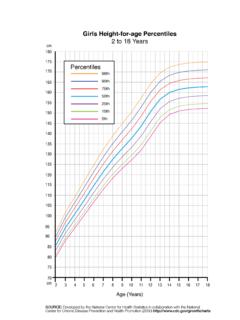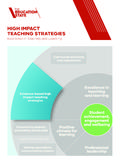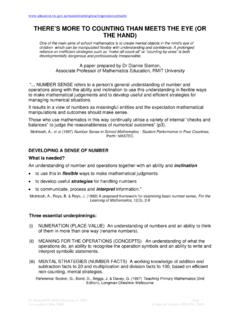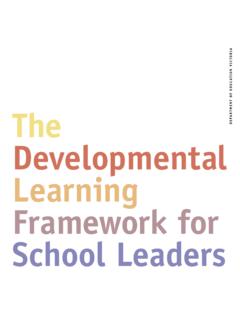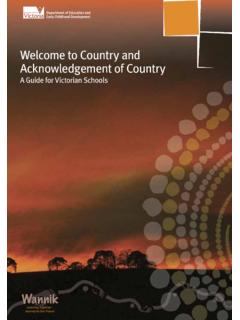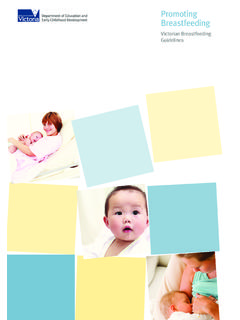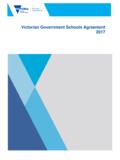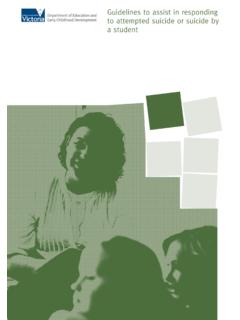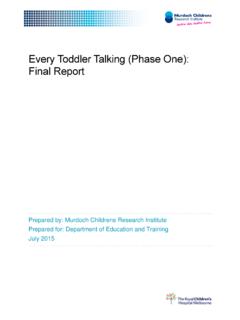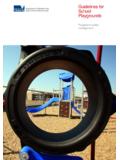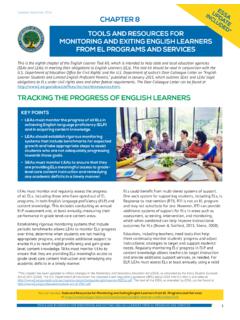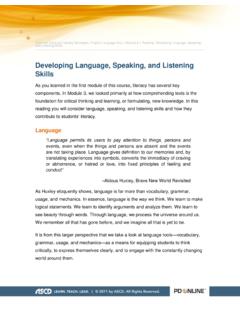Transcription of PEER OBSERVATION, FEEDBACK AND REFLECTION
1 peer observation , FEEDBACK AND REFLECTION :A GUIDE FOR PRINCIPALS AND SCHOOL LEADERS2 | A GUIDE FOR PRINCIPALS AND SCHOOL LEADERSA GUIDE FOR PRINCIPALS AND SCHOOL LEADERS | 3 Published by the Department of Education and Training Melbourne May 2018 State of Victoria (Department of Education and Training) 2018 The copyright in this document is owned by the State of Victoria (Department of Education and Training), or in the case of some materials, by third parties (third party materials). No part may be reproduced by any process except in accordance with the provisions of the Copyright Act 1968, the National Education Access Licence for Schools (NEALS) (see below) or with educational institution situated in Australia which is not conducted for profit, or a body responsible for administering such an institution may copy and communicate the materials, other than third party materials, for the educational purposes of the by the Department of Education and Training, 2 Treasury Place, East Melbourne, Victoria, : 978-0-7594-0831-9 ABOUT THIS GUIDE 7 How these resources are structured 7 INTRODUCTION TO peer observation 8 What is peer observation ?
2 8 Why engage in peer observation ? 9 What does the research tell us? 9 THE EDUCATION STATE AND peer observation 11 Key initiatives 11 Alignment with school priorities 15 Approaches to peer observation as professional learning 15 PUTTING peer observation INTO PRACTICE 16 Establishing a culture of professional practice and peer observation 16 Establishing the preconditions for success 17 Establishing protocols, procedures and structures that support peer observation 17 The cycle of peer observation 19 REFERENCES 20 Links to other tools 20 Professional reading 20 Departmental resources 20 ASSESSMENT OF READINESS FOR peer observation 21 Facilitator notes 21 Activity and discussion prompts 21 PROCESS FOR DEVELOPING peer observation PROTOCOLS 22 What types of protocols are needed? 22 Prompts in developing protocols 22 CONTENTS6 | A GUIDE FOR PRINCIPALS AND SCHOOL LEADERSWe welcome your input.
3 If you have any FEEDBACK on the peer observation guide, please share your FEEDBACK at GUIDE FOR PRINCIPALS AND SCHOOL LEADERS | 7 This guide has been developed to support principals and school leaders to introduce and embed peer observation in schools. This guide is applicable to all school contexts. peer observation implemented under these guidelines is not to be used in any unsatisfactory performance procedure. Management of unsatisfactory performance is to be conducted under the Guidelines for Managing Complaints, Misconduct and Unsatisfactory Performance in the Teaching Service. The use of this peer observation material is optional for schools. Where appropriate to the needs of the school, this guide can support the implementation and embedding of peer these resources are structured A guide for principals and school leaders, which introduces peer observation , including FEEDBACK and REFLECTION , as an improvement strategy to enhance student learning.
4 This guide includes advice on the preconditions for successful peer observation and how to establish a culture that enables this practice to happen. A guide for teachers, which describes the stages and steps of peer observation . This includes information about what each phase involves, good techniques and practices, as well as advice for both the teacher being observed and the teacher who is observing. Examples and links to further resources are also included. Tools for peer observation : each phase in the cycle of peer observation includes an annotated template for teachers to inform their self REFLECTION , pre observation conversation, observation , and post observation REFLECTION and FEEDBACK . These tools are available on the Department s website at ABOUT THIS GUIDE8 | A GUIDE FOR PRINCIPALS AND SCHOOL LEADERSWhat is peer observation ?
5 peer observation involves teachers observing each other s practice and learning from one another, focusing on teachers individual needs and the opportunity to both learn from others practice and offer constructive FEEDBACK to peers. peer observation aims to support the sharing of practice and builds self-awareness about the impact of one s teaching practice in order to affect peer observation is a structured and negotiated way of teachers working together to refine and improve their practice, and can support teachers to enhance student learning when situated in a broader culture of collaboration, mutual trust and respect. To be successful, peer observations must have a specific focus, for example, lesson structure or the articulation of lesson Whole-school protocols and preconditions support peer observation to be structured and ensure that outcomes for staff and students are maximised.
6 The Victorian Government Schools Agreement 2017 requires that arrangements for collaboration, peer observation including FEEDBACK and REFLECTION , and coaching are the subject of consultation. To this end, school leaders should establish protocols, procedures and structures that support peer observation as a core part of school-based professional learning, using the school s agreed consultative observation is a developmental opportunity for Australian Institute for Teaching and School Leadership (AITSL) How-to Guide: peer observation TO peer OBSERVATIONTo be successful, peer observations must have a specific focus, for example, lesson structure or the articulation of lesson GUIDE FOR PRINCIPALS AND SCHOOL LEADERS | 9 Why engage in peer observation ? peer observation enables teachers to build their individual capability and develop a shared understanding of effective classroom practice.
7 It also allows teachers to build their capability in giving and receiving FEEDBACK . Research shows that when done well, peer observation , including FEEDBACK and REFLECTION , has a high impact on improving professional practice and can be an important part of a teacher s professional The Victorian Teaching and Learning Model (including the Practice Principles for Excellence in Teaching and Learning, the Pedagogical Model and the High Impact Teaching Strategies) can support teachers to determine the focus of peer observations. For example, areas of focus could include pedagogical approaches, curriculum planning, assessment strategies or opportunities for student voice and agency within the lesson. peer observation can benefit both the teacher being observed and the observer. peer observation can: provide opportunities to discuss challenges and successes with trusted colleagues support the sharing of ideas and expertise among teachers build a community of trust through opening classroom practice to a wider audience support a focus on improving the impact of learning4 contribute to the collective efficacy of the whole DuFour, R.
8 , & Eaker, R. E. (1998), Professional learning communities at work: best practices for enhancing student achievement. Bloomington, Ind.: National Education Service; Alexandria, Va. ASCD, Australian Institute for Teaching and School Leadership How-to Guide: peer observation Developing your school with Cambridge: A guide for school leaders 6: Evaluating Teaching, Cambridge International Danielson Charlotte, (2012) teacher Evaluation: What s Fair? What s Effective? pp 32 37 in Educational Leadership Vol 70, No Macklin, P and Zbar, V., Driving School Improvement; a practical guide, ACER Press, 2017; Kruger, J and Dunning, D 1999, Unskilled and Unaware of It: How Difficulties in Recognizing One s Own Incompetence Lead to Inflated Self Assessments Journal of Personality and Social Psychology, , , Danielson Charlotte, (2012) teacher Evaluation: What s Fair?
9 What s Effective? pp 32 37 in Educational Leadership Vol 70, No Smith Ruth and Starmer Lisa, Building Adaptive expertise: Professional learning that works with teachers, not on them, Australian Educational Leader, Vol 39., No 4 2017; Timperley, H & Robinson, V 2002, Partnership: Focussing the Relationship on the Task of School Improvement, New Zealand Council for Educational ResearchWhat does the research tell us? classroom observation has become one of the most widely used sources of research internationally to give FEEDBACK to There is extensive research on using peer observation to support individual teachers, teams of teachers and a whole-school instructional approach, as well as making a positive contribution to the collective efficacy and the educational culture of a Research about the efficacy and potential of peer observation points to benefits of accuracy, agency, adaptive expertise, collaboration, collective efficacy, impact on student learning and school culture.
10 ACCURACY Macklin and Zbar have identified that, despite what many of us think, it is often the case that others have a better sense of our competence and performance than we have ourselves. Their work draws on the body of research by American academic David Dunning on ambiguity and self-evaluation to illustrate how self-perception tends towards Danielson found that the conversations following an observation are the best opportunity to engage teachers in thinking through how they can strengthen their practice. 8 Smith and Starmer, drawing on the research of Timperley and Robinson, argue that peer observation provides greater opportunity to move away from a desire to tell teachers what to do and enables them instead to unpack their beliefs about practice. observation needs to focus on teachers learning, not remediation or 10 | A GUIDE FOR PRINCIPALS AND SCHOOL LEADERSADAPTIVE EXPERTISE peer observation provides schools with a flexible approach which supports personalised and reflective professional learning that is based on trust and openness to learning.
